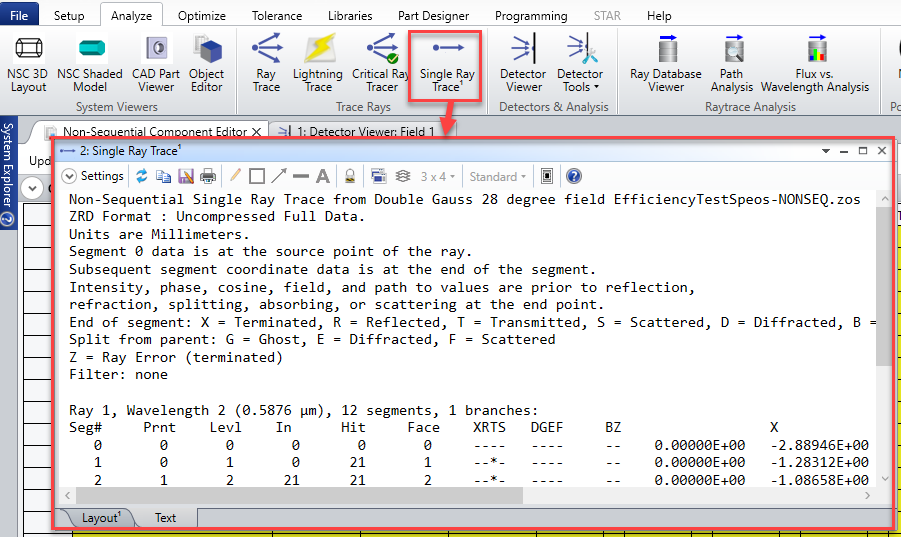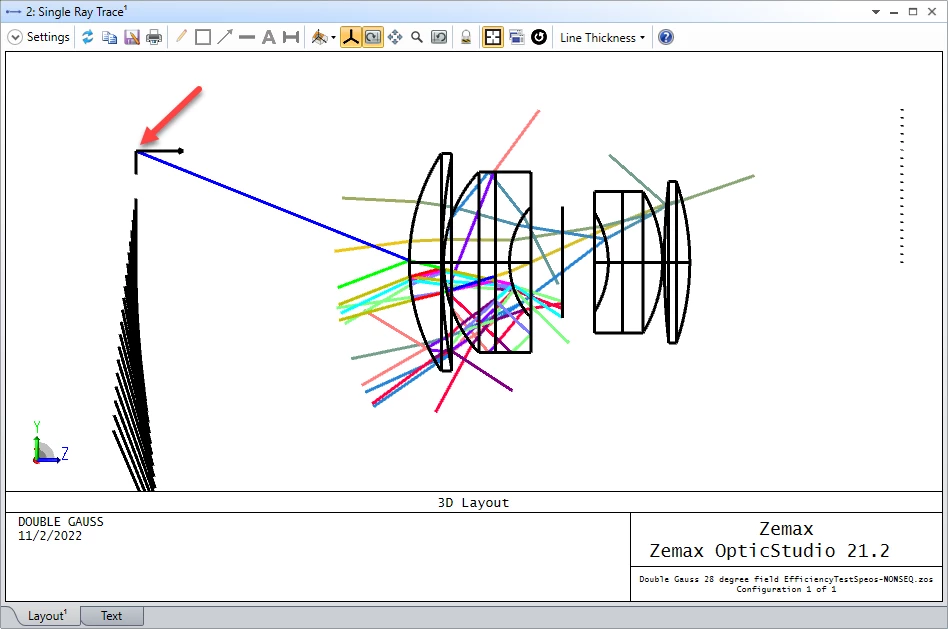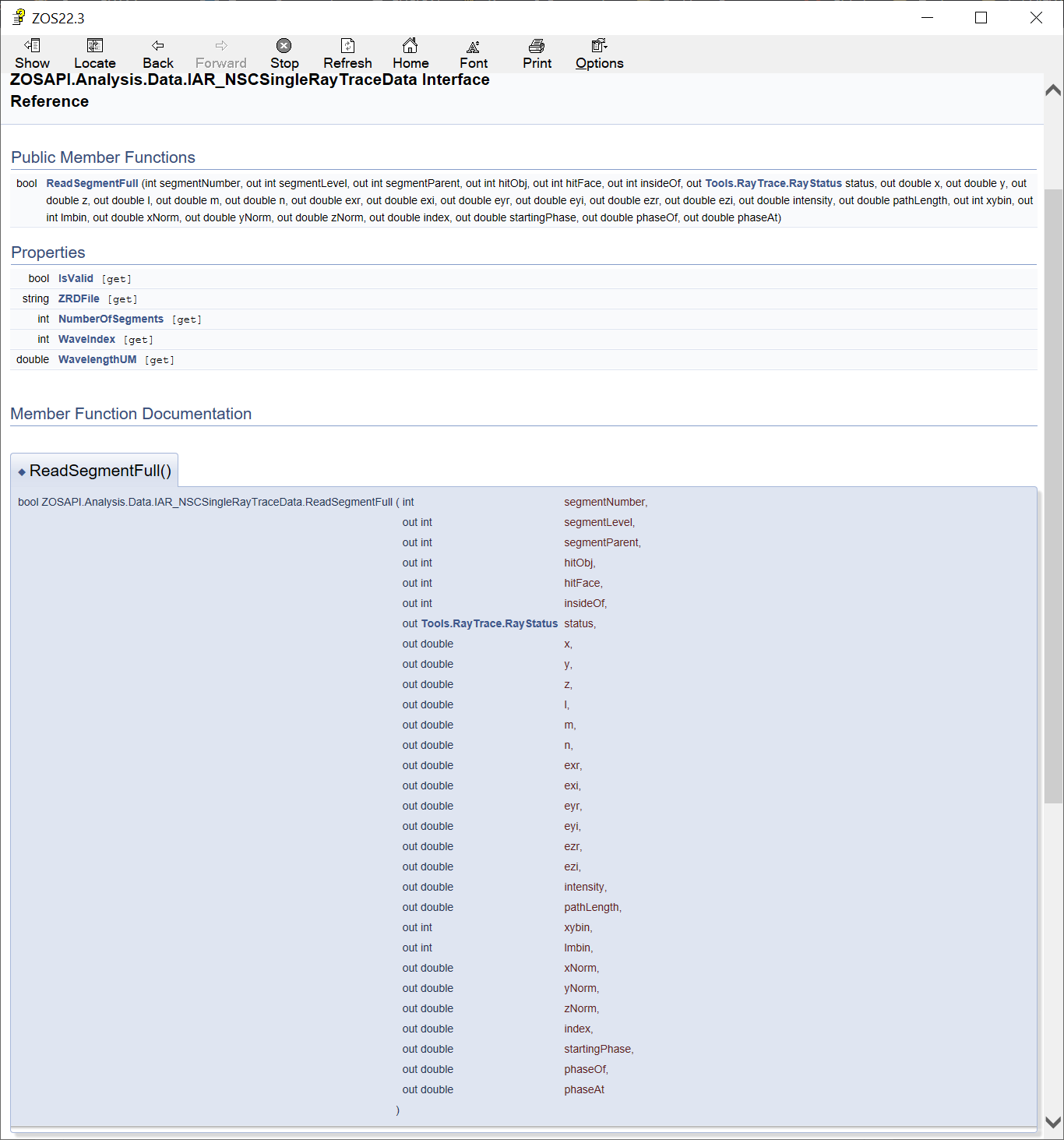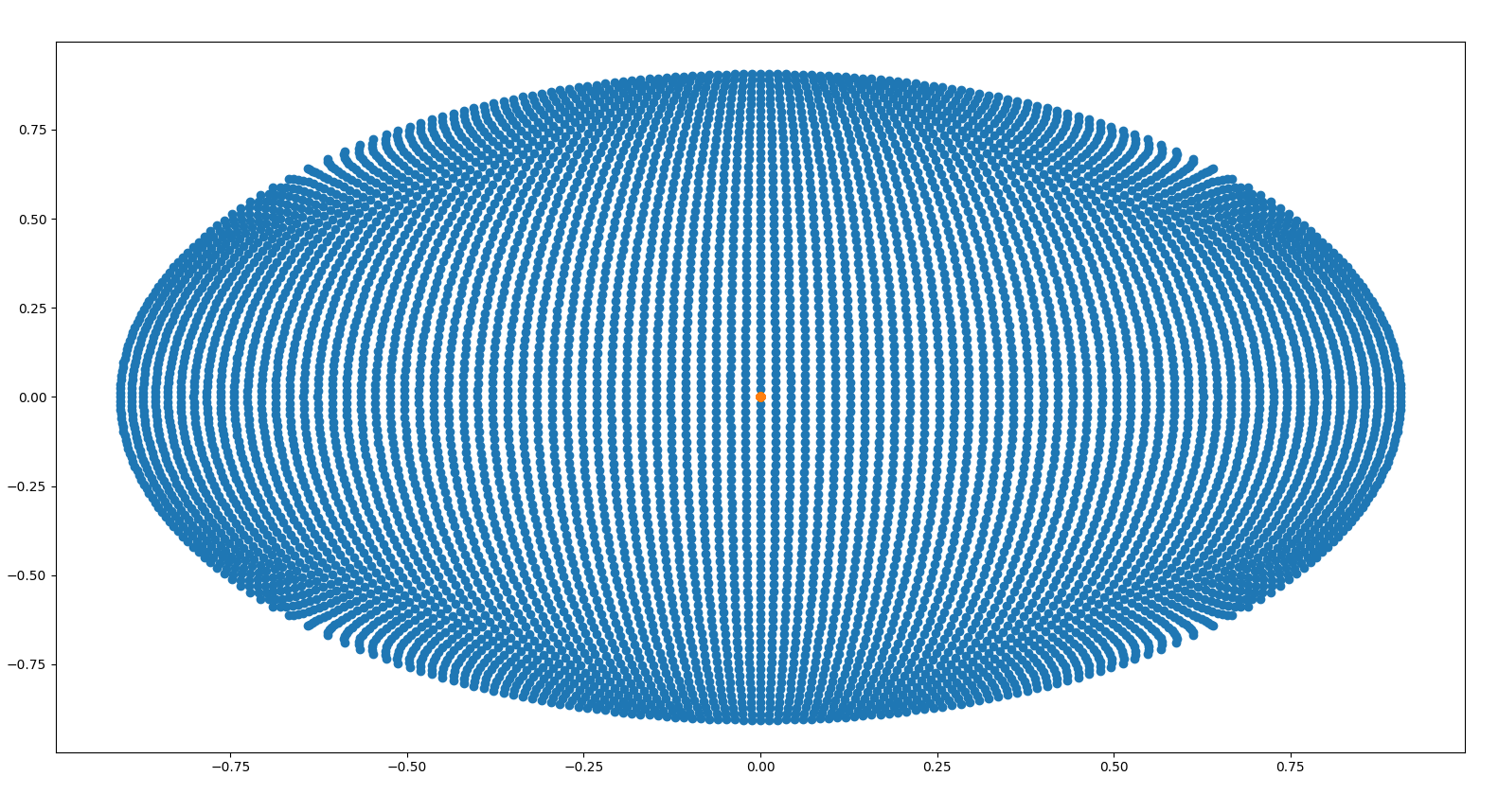One of our goals in Ansys is to model reality so our customers get the most accurate modeling analysis that agrees with their measurements in the real world. As part of this goal, we are enhancing the Non-Sequential mode in OpticStudio. In the 22.3 release, the team brought to life the NSC single ray trace analysis; let me tell you, it is powerful and cool!
With the NSC single ray trace tool, you can add a source ray anywhere in the system space to evaluate light propagating. This tool will not modify or add an NSC object in the editor, allowing you to keep your editor system clean. Also, it provides all the ray data just as the ray database does. No more filtering ray databases to find the ray you want to evaluate! If that is not enough, the tool is also available in the ZOS-API and allows the extraction of any computed parameters. See attached example code for a basic introduction to this tool.

Also, look at the NSC single ray trace layout tab at the bottom of the analysis window. Here you can visualize the ray being traced to ensure it is the one you intend to analyze. The visualization becomes very powerful to our users when splitting and scattering are on since you can visualize the effects of stray light coming from that single ray. I look forward to seeing what our users will do with this tool.









